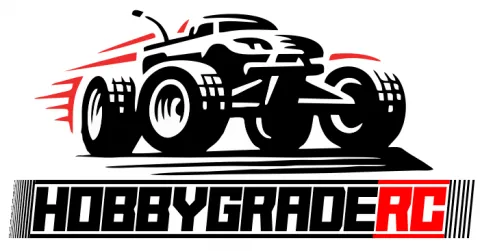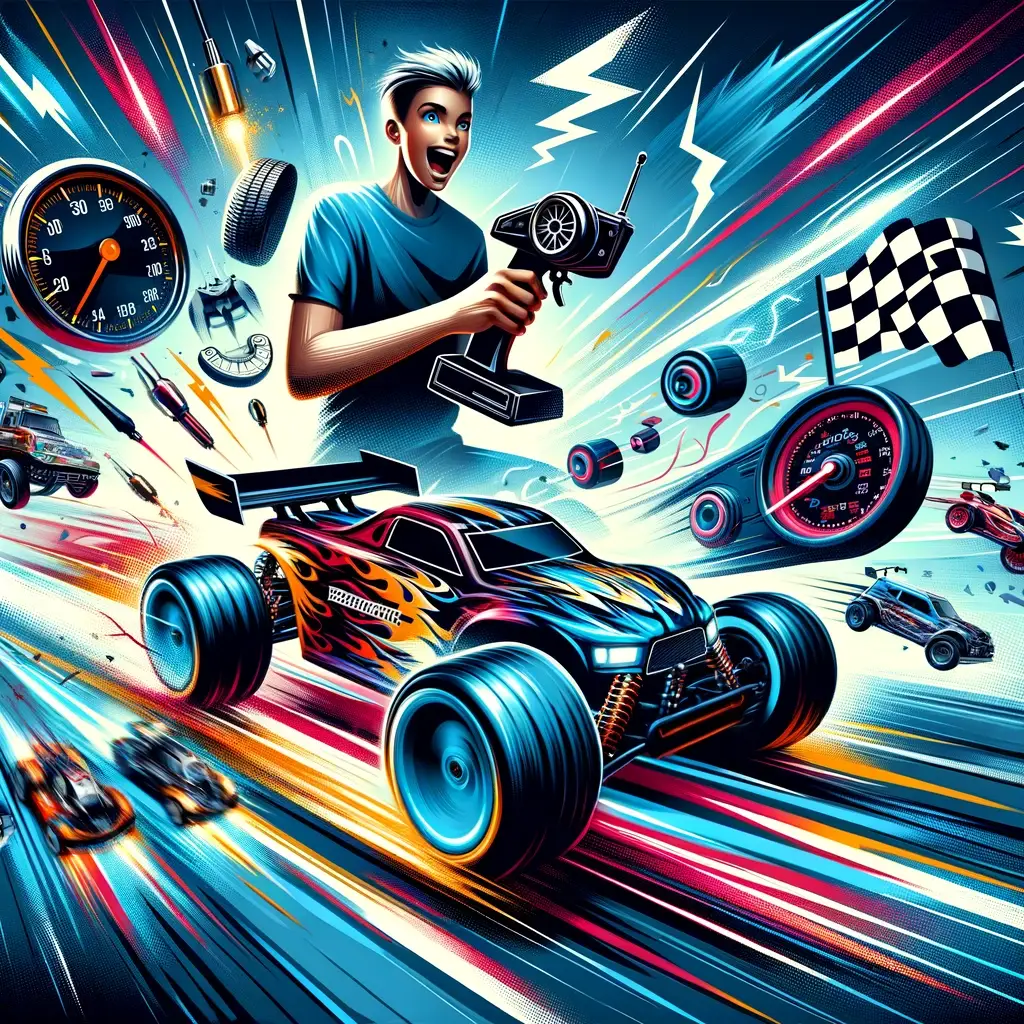Getting an RC car up to insane speeds is a thrill. But a sluggish model can be a letdown. This guide will explore the top 10 reasons your RC car lacks speed and steps to diagnose issues. We’ll also cover useful upgrades and mods to give it more top end.
Table of Contents
Key Takeaways Table
| Reason | How to Fix |
|---|---|
| Low battery voltage | Fully recharge battery, replace if worn out |
| Overheating motor | Clean debris, improve cooling |
| Slipping clutch | Clean, adjust or replace clutch |
| Lack of tuning | Break-in motor, adjust gear mesh |
| Excess mechanical drag | Lubricate parts, align components |
| Drivetrain binding | Ensure smooth rotation, loosen overtightened parts |
| Insufficient gear ratio | Install lower ratio pinion/spur gears |
| Underpowered motor | Upgrade motor to higher kV rating |
| Slow ESC | Replace with high performance programmable ESC |
| Added weight | Reduce chassis weight with alloy parts |
Useful Upgrades to Increase Speed
- Higher voltage LiPo battery
- Lower gearing for more torque
- Brushless motor system
- Multi-cell LiPo battery
- High torque servo
- Stiffer suspension springs
- Computerized ESC with turbo mode
- High traction tires
- Lightweight chassis and wheels
1. Low Battery Voltage
As your LiPo battery discharges, the voltage drops. Low voltage robs power that could be going to the motor.
How to Fix:
- Fully recharge battery. Old batteries lose capacity.
- Replace battery if over 2 years old.
- Ensure correct voltage (S) pack for vehicle.
A fully charged modern battery provides maximum voltage and current under load.
2. Overheating Motor
Insufficient cooling causes the motor to overheat, reducing performance. Dirt, debris, damaged wires, and poor soldering can contribute.
How to Fix:
- Clean motor exterior and vent holes.
- Ensure proper gear mesh – not too tight.
- Check motor connections for issues.
- Improve airflow and cooling.
Preventing overheating allows the motor to deliver full power.
3. Slipping Clutch
The motor clutch transfers power to the drivetrain. Oil, wear and improper mesh can cause it to slip, robbing acceleration.
How to Fix:
- Disassemble, clean, and re-oil clutch.
- Ensure clutch is securely tightened on motor shaft.
- Replace worn clutch components as needed.
Restoring proper clutch grip gives full power transfer to the wheels.
4. Lack of Tuning
New motors need breaking-in while gear mesh, slipper clutch, differentials all need precise adjustment to maximize speed.
How to Fix:
- Run car slowly to break motor in properly.
- Follow tuning guides to dial in differential fluids, gear mesh, tire pressure.
- Adjust slipper clutch tension for ideal power transfer without overheating.
Fine tuning and properly breaking in the drivetrain maximizes speed from the same hardware.
5. Excess Mechanical Drag
Issues like binding suspension joints, drivetrain friction, and unbalanced wheels/tires cause resistance, reducing speed.
How to Fix:
- Lubricate suspension joints and differentials.
- Ensure wheels/tires balanced and concentric.
- Check for bent axles, driveshafts, warped chassis.
- Ensure parts move freely without binding.
Eliminating anything causing unwanted friction means more power gets to the ground.
6. Drivetrain Binding
Similar to mechanical drag, rough, corroded or damaged gears in the transmission can grind or bind, dragging down performance.
How to Fix:
- Disassemble, clean, and lubricate transmission gears as needed.
- Replace any damaged gears not spinning smoothly.
- Loosen overtightened screws compressing components.
Smooth, low friction operation of the entire drivetrain improves speed.
7. Insufficient Gear Ratio
Using too large a pinion/spur gear ratio reduces torque at the wheels, hurting acceleration.
How to Fix:
- Install smaller pinion or larger spur gear for lower ratio.
- Start conservatively and test top speed.
- Monitor motor and battery temperature.
Optimizing the gear ratio to favor torque gives a boost in speed until traction limited.
8. Underpowered Motor
Motors with low kV ratings have less rpm potential. Physically larger motors also have more torque.
How to Fix:
- Upgrade to motor with higher kV rating for more rpm.
- Ensure motor is properly sized for vehicle – bigger is better.
- Validate recommended motor size/rating from manufacturer.
The peak power and rpm capability of the motor fundamentally determines maximum speed.
9. Slow ESC
The electronic speed control regulates power to the motor. A low amperage ESC limits speed regardless of other components.
How to Fix:
- Replace with high current, high performance ESC.
- Ensure ESC has either no limit or is set above motor rating.
- Use ESC with programmable profiles to unleash full speed potential of system.
A sufficiently powerful ESC removes power restrictions on the motor.
10. Added Weight
Heavier vehicles require more power to accelerate and attain speed. Reducing weight allows a given motor to drive faster.
How to Fix:
- Utilize lightweight alloy parts like chassis, hubs, shock caps.
- Replace steel screws with titanium.
- Use lightweight wheels/tires optimized for speed over grip.
- Strip unnecessary items to reduce weight.
Shedding pounds enables a vehicle to better utilize the fixed power available.
RC Car Speed Troubleshooting Tips
Here are some other useful tips for diagnosing and fixing speed issues:
- Ensure proper mesh – loose can lose power, overtightened causes heat.
- Check for debris stuck in wheels, drivetrain binding suspension.
- Ensure smooth suspension movement – misaligned links hinder speed.
- Balance wheels/tires. Even tiny out-of-balance forces create speed robbing friction.
- Look for damaged chassis, arms causing unwanted flex under stress.
- Ensure slipper clutch adjusted to avoid tire spin but not overly loose.
- Inspect solder connections – cold joints can cause intermittent power loss.
Careful inspection of the entire chassis and drivetrain helps determine causes of limited speed.
Conclusion
Diagnosing the root cause of lackluster RC car speed requires methodically considering all components contributing to power delivery. Once any underlying issues are addressed, purpose-built upgrades to the motor, battery, and electronics unleash maximum speed potential your vehicle was designed for. Just be sure to only run at high speed in suitable areas safely!

